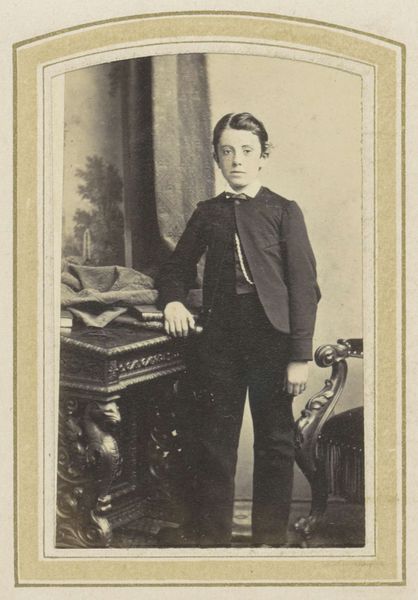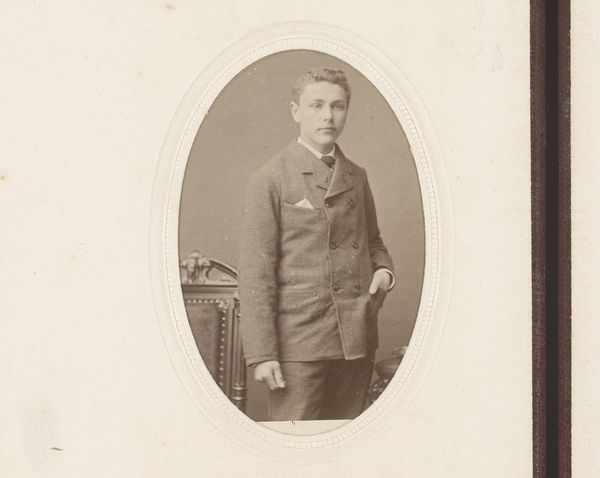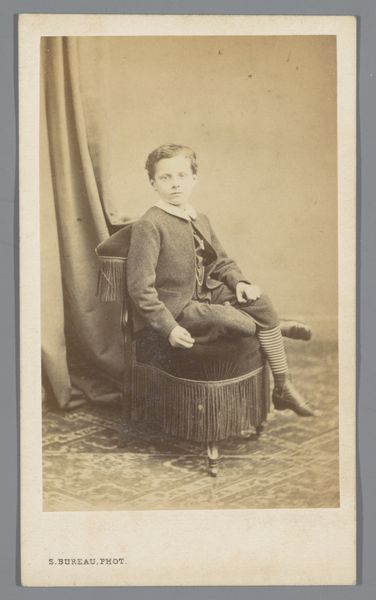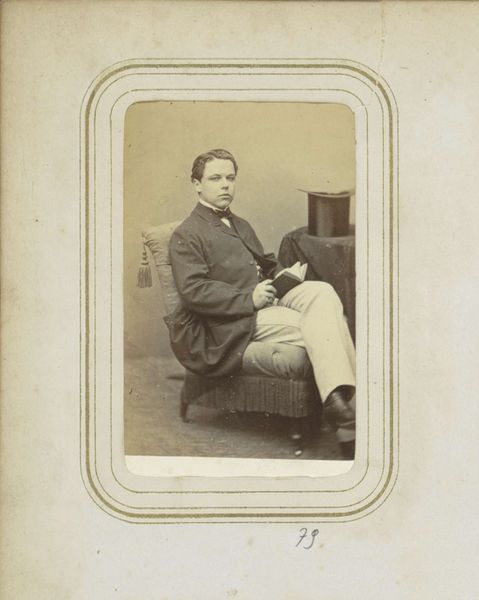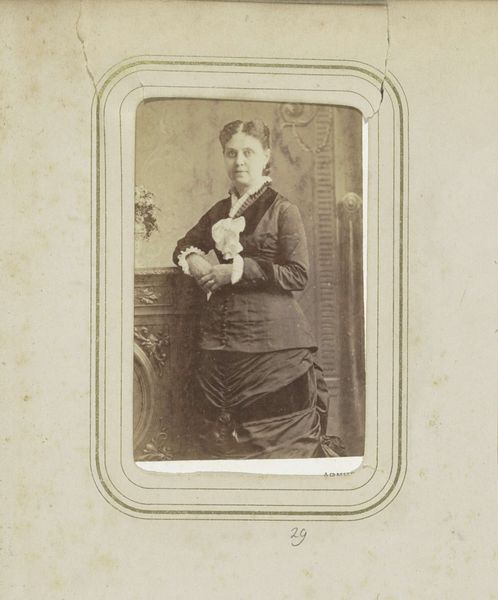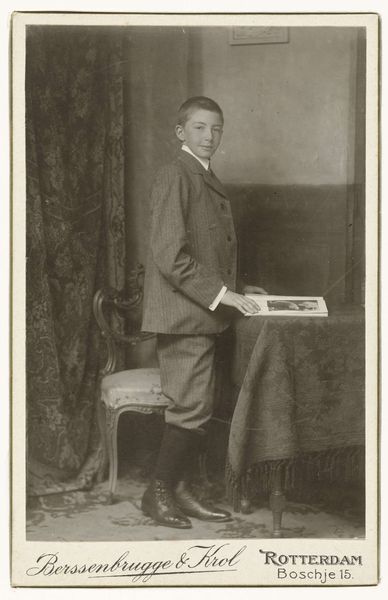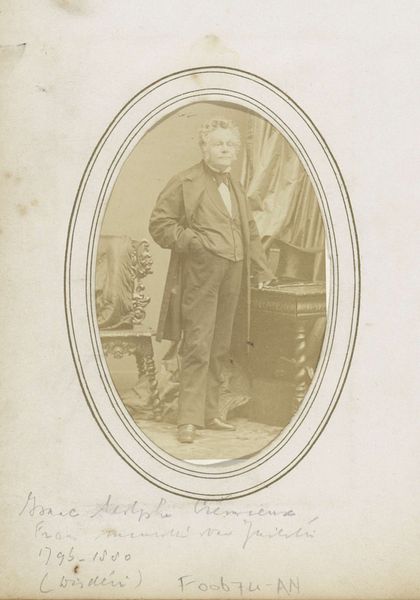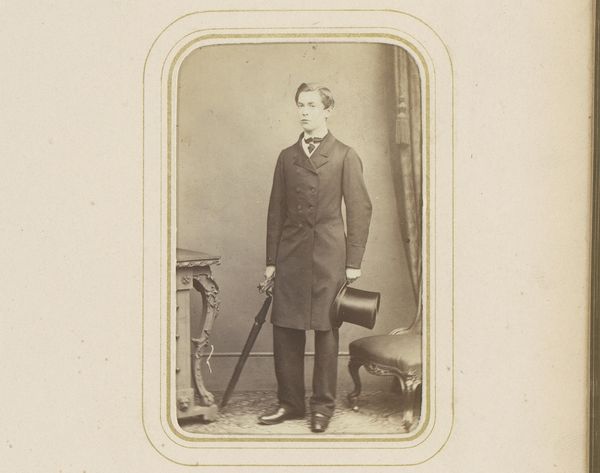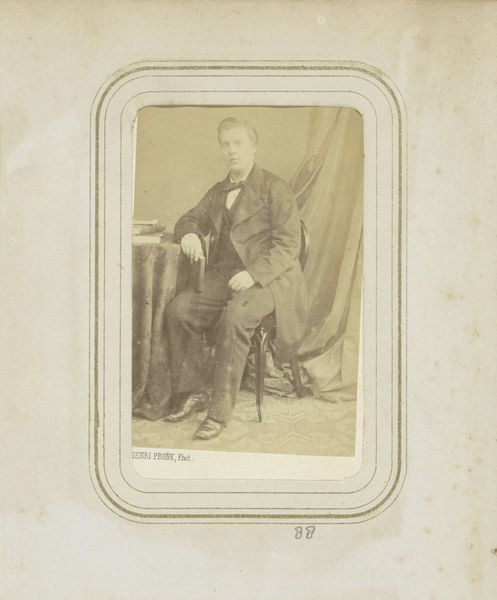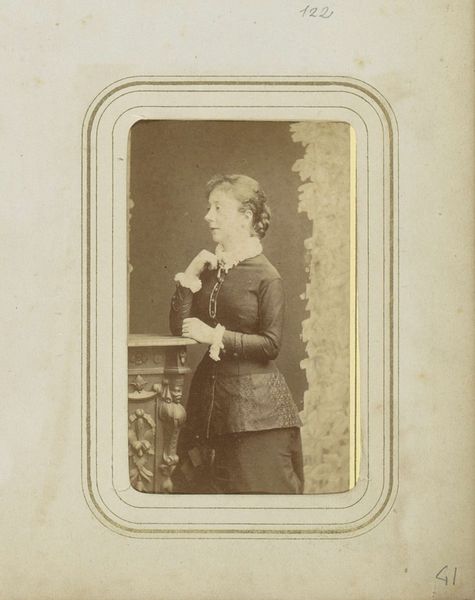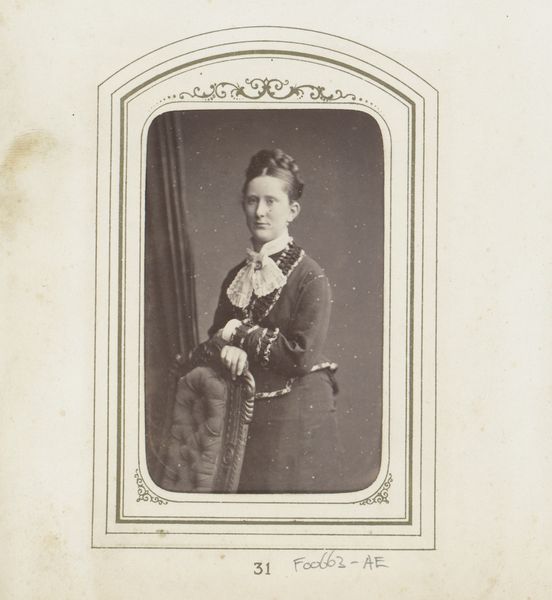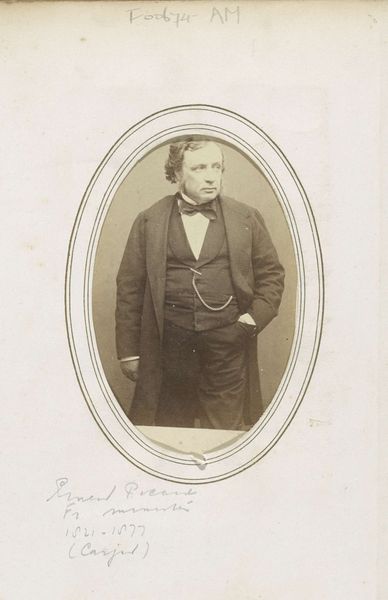
photography, gelatin-silver-print
#
photography
#
child
#
gelatin-silver-print
#
genre-painting
#
realism
Dimensions: height 104 mm, width 62 mm
Copyright: Rijks Museum: Open Domain
Curator: This gelatin silver print, "Portret van een jongen, zittend in een uniform," meaning "Portrait of a boy, sitting in a uniform" was created after 1878 by François Chéri Rousseau. The scene has such stillness to it. Editor: Yes, the light itself feels muted, restrained. I notice how the warm tones throughout harmonize in the brown monochromatic medium; and also the contrast of rigid and supple forms and textures--the severity of his tailored jacket, compared to the soft pile of that ottoman under his feet. Curator: The boy’s uniform speaks volumes. It is both a marker of social identity and personal discipline. What future was already being prescribed for him? It also echoes the stringent formality of photography during that time; even in its supposed realism, a posed fantasy. Editor: Precisely, this isn’t some candid glimpse into childhood. Consider the construction, even if it leans towards Realism stylistically. His seated placement on that ornate chair, in the setting, conveys a narrative steeped in staged propriety. Curator: Observe how he is surrounded by symbols of education and status: the books, the meticulously detailed furniture. This imagery transmits social aspirations and perhaps parental expectations projected onto a young life. His expression is somewhat neutral, neither joyous nor sorrowful. It suggests a future preordained. Editor: The composition creates an intricate dance between formality and fleeting innocence, a subtle tension between structure and the potential for freedom that perhaps defines him as both a human being, and an index in time of social expectation. Curator: In many ways, this portrait serves as a vessel to look into that 19th-century society's codified ambitions. The image encapsulates and immortalizes it--in its visual order and presentation. Editor: It’s quite amazing how Rousseau uses this photographic lens as a filter through which both individual personhood and the social collective meet—frozen, perhaps, at a specific, fascinating point. Curator: Precisely. We see a staged authenticity representing a period that helped solidify visual codes through genre. Editor: Yes, it's these frozen moments that teach us about ourselves; through them we learn of continuity, structure, and a lens into history.
Comments
No comments
Be the first to comment and join the conversation on the ultimate creative platform.
